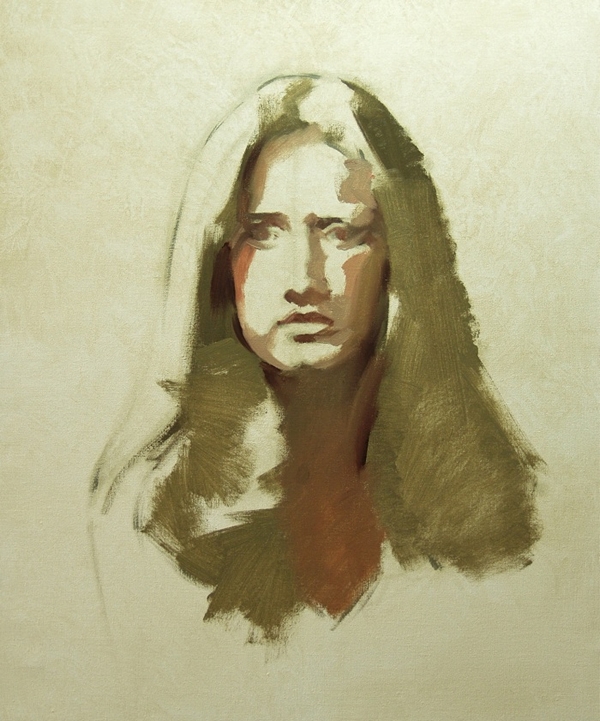Step 9: Transition Halftones
 |
|
|
The Halftones
(Steps 9 through 13)
• Now we come to the most important portion of the painting.
The halftones and the lights occupy all of the light-struck
planes of the head. Each area of tone must be judged for value
(how dark or how light is it?), for hue (what color is it?),
and for intensity (how saturated with color is it?), and then
placed correctly on the painting (this is drawing).
• The halftones should be regarded as a "mosaic"
of tones — that is, a collection of separate "pieces"
of tone, each requring its own decisions. Try not to consciously
blend the tones at this point. The painting will be stronger
and more "architectural" if the "chips of the
mosaic" are allowed to stand independently. Naturally,
since the paint is wet, some flowing between tones will occur. |
 Hover to zoom final painting
Hover to zoom final painting |
| There is a pattern of tones that lie along the
edges where the light and shade meet. These are the transition
halftones. Look carefully for them. These transition halftones
can have some of the most intense color that will occur in the
portrait. Wherever the shadows and the lights meet, you find
transition halftones. Study these tones carefully. You will
find some surprisingly strong color here. This step leads you
into the painting of the halftones, which follows immediately. |
|